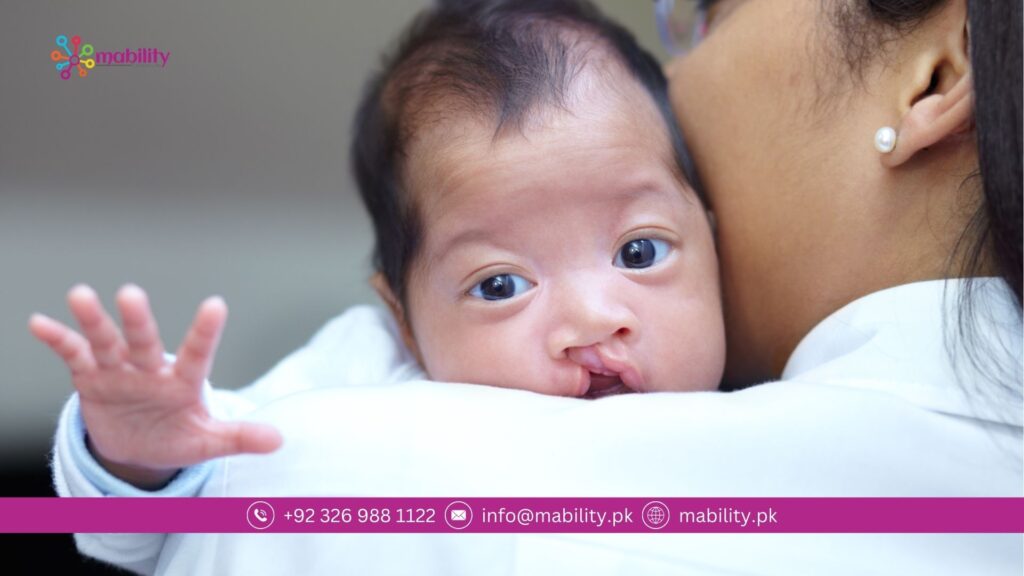
Cleft lip and Cleft palate
Cleft lip and cleft palate refer to openings or clefts in the upper lip, the roof of the mouth (palate), or both. These conditions arise when the facial structures of an unborn baby undergo incomplete closure during development.
Considered among the prevalent birth defects, cleft lip and cleft palate typically manifest as isolated anomalies, though they may also be linked to various inherited genetic conditions or syndromes.
While the birth of a baby with a cleft may be distressing, it’s important to note that corrective measures are available. Through a series of surgeries, normal function can be restored, and a more typical appearance achieved, often with minimal scarring.
Symptoms:
Typically, a noticeable split (cleft) in the lip or palate is evident immediately after birth. Cleft lip and cleft palate may present in various ways, such as:
- A cleft affecting one or both sides of the face, involving a split in the lip and the roof of the mouth (palate).
- A cleft in the lip, which may appear as a small notch or extend from the lip through the upper gum and palate into the bottom of the nose.
- A cleft solely in the roof of the mouth that doesn’t impact the facial appearance.
Less frequently, a cleft may occur exclusively in the muscles of the soft palate, known as submucous cleft palate. These muscles are located at the back of the mouth and are covered by the lining of the mouth. This type of cleft may go unnoticed at birth and might only be diagnosed later when signs become apparent.
Signs and symptoms of submucous cleft palate may include:
- Difficulty with feedings.
- Challenges with swallowing, possibly leading to liquids or foods coming out of the nose.
- A nasal speaking voice.
- Persistent ear infections.
Causes:
Cleft lip and cleft palate result from improper fusion of tissues in the baby’s face and mouth during development. Typically, the fusion of the lip and palate tissues occurs in the second and third months of pregnancy. However, in cases of cleft lip and cleft palate, this fusion either doesn’t happen at all or only takes place partially, resulting in an opening or cleft.
Researchers propose that a combination of genetic and environmental factors contributes to the majority of cases of cleft lip and cleft palate. While a definite cause remains unidentified in many instances, it is believed that the interplay between genetic factors passed on by either the mother or the father and environmental influences plays a crucial role. Genes associated with clefting can be inherited either independently or as part of a genetic syndrome that includes cleft lip or cleft palate among its manifestations. In certain situations, babies may inherit a gene that predisposes them to cleft development, and an environmental trigger ultimately leads to the occurrence of the cleft.
Risk Factors:
Several factors can elevate the probability of a baby developing cleft lip and cleft palate, including:
-
- Family history: Parents with a familial background of cleft lip or cleft palate are at a heightened risk of having a baby with a cleft.
- Exposure to certain substances during pregnancy: Pregnant women who smoke cigarettes, consume alcohol, or take specific medications may have an increased likelihood of their baby being born with cleft lip and cleft palate.
-
- Diabetes diagnosis: There is some indication that women diagnosed with diabetes before pregnancy may face an elevated risk of giving birth to a baby with cleft lip, with or without a cleft palate.
- Obesity during pregnancy: Evidence suggests that babies born to obese women might have an increased risk of cleft lip and palate.
Males are more predisposed to having a cleft lip with or without a cleft palate, while cleft palate without cleft lip is more commonly observed in females. In the United States, Native Americans reportedly have the highest prevalence of cleft lip and palate, while African-Americans have the lowest occurrence.
Complications:
Children experiencing cleft lip with or without cleft palate encounter diverse challenges, influenced by the type and severity of the cleft.
- Difficulty feeding: Immediate post-birth concerns revolve around feeding. While most infants with cleft lip can breast-feed, a cleft palate may pose challenges to sucking.
- Ear infections and hearing loss: Babies with cleft palate are particularly susceptible to developing middle ear fluid and experiencing hearing loss.
- Dental problems: When the cleft extends through the upper gum, it may impact tooth development.
- Speech difficulties: The development of normal speech can be affected by a cleft palate, as the palate plays a role in forming sounds. Speech may exhibit a nasal quality.
- Coping with a medical condition: Children with clefts may grapple with social, emotional, and behavioral issues due to differences in appearance and the stress associated with intensive medical care.
Also Read: What is Down Syndrome?

Mability Institute is more than just a school; it is a place where dreams take flight,where unique abilitiesare celebrated, and where the power of education totransform lives is deeply understood.
Main services
- Special Education
- Physiotherapy
- Nutritionist
- Occupational Therapy
- Psychology
- Speech Therapy
Key features
- Highly Qualified Therapists
- Modern & Well-Equipped Campus
- Excellent Treatment Department
- Stem Learning
- Unique Tailored Plans
Social Links
- Youtube
